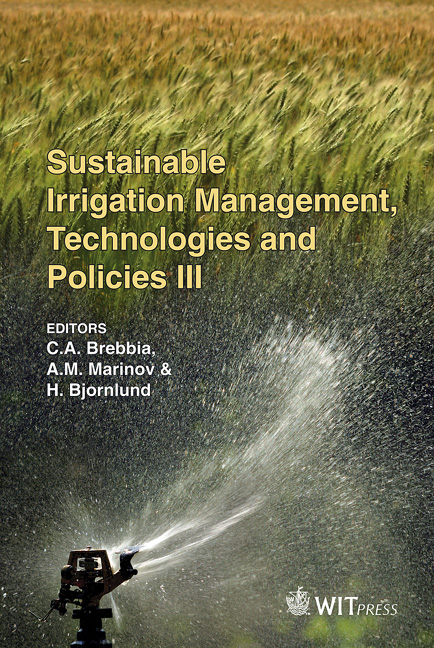Modelling The Adoption Of Different Types Of Irrigation Water Technology In Alberta, Canada
Price
Free (open access)
Transaction
Volume
134
Pages
13
Page Range
189 - 201
Published
2010
Size
284 kb
Paper DOI
10.2495/SI100171
Copyright
WIT Press
Author(s)
S. Wheeler, H. Bjornlund, T. Olsen, K. K. Klein & L. Nicol
Abstract
This paper analyses farmers’ adoption of hard and soft technology in relation to irrigation technologies, production changes and water management changes in Alberta, Canada. Greater significance was found in modelling the adoption of hard technology (such as irrigation infrastructure technologies) than modelling the adoption of soft technology (water management or irrigation area changes). Overall, some of the most important influences include farm size, irrigation technology, off-farm income and being a member of an irrigation district. Few socio-economic variables were found to be important. Adoption of soft technology most likely leads to greater water efficiencies and in the future greater attention should be paid to a wider variety of factors and influences in order to model water management and trading behaviour. Keywords: hard and soft irrigation water technology, water management skills, water trading, Alberta, Canada. 1 Introduction Due to increased water scarcity and escalating environmental problems across the globe there is an increased push to reduce water use and improve water use efficiency, especially for irrigation [1]. Some areas in Canada have faced increasing water shortages since the early 1990s, with irrigators traditionally being the largest water consumer. The majority of irrigated land in Canada is in Alberta (64%), with most of this irrigation in the South Saskatchewan River Basin (SSRB) and it accounts for 71% of consumptive use of surface water [2].
Keywords
hard and soft irrigation water technology, water management skills, water trading, Alberta, Canada





